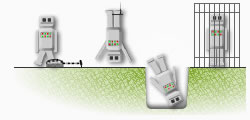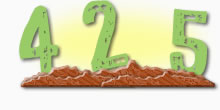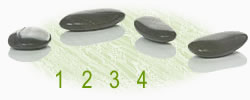These are older articles. Please bear in mind the further back you go, the more dated the material may be — in some cases.
Mike Cherim’s Blogging Past
Protecting Forms from Spam ‘Bots
 Spam robots or spam ‘bots abuse comment forms, contact forms, and any forms they can. A true scourge of the web. They exploit insecure forms to send spam. Fortunately there are individual methods of slowing them down. And when used jointly, ‘bots can actually be stopped. This post shares four scripted operations I’ve found particularly helpful to prevent illegitimate posting. In the following examples, at least one variable will be posted, and will appear in this article as
Spam robots or spam ‘bots abuse comment forms, contact forms, and any forms they can. A true scourge of the web. They exploit insecure forms to send spam. Fortunately there are individual methods of slowing them down. And when used jointly, ‘bots can actually be stopped. This post shares four scripted operations I’ve found particularly helpful to prevent illegitimate posting. In the following examples, at least one variable will be posted, and will appear in this article as $posted_var (meaning it’s captured by $_POST['var']) to offer greater clarity, but this variable can be whatever you need it to be: name, email, etc.
Continue reading “Protecting Forms from Spam ‘Bots” »
Will the Road to HTML 5 be Rough?
 I am really impressed with the HTML 5 work being performed by Ian Hickson, as the draft editor, and the others who are part of the WHATWG. I’m a fan of the work, and I believe it has promise. From the updated meaning of some of those gray area elements, to the deprecation (made obsolete) of some of the garbage that has littered the web for the past fifteen years, to the introduction of new elements that will offer organizational value where none exists today, to the introduction of new attributes to give all elements clearer meaning, it all bodes well with me. But I cannot help but wonder how we will get there.
I am really impressed with the HTML 5 work being performed by Ian Hickson, as the draft editor, and the others who are part of the WHATWG. I’m a fan of the work, and I believe it has promise. From the updated meaning of some of those gray area elements, to the deprecation (made obsolete) of some of the garbage that has littered the web for the past fifteen years, to the introduction of new elements that will offer organizational value where none exists today, to the introduction of new attributes to give all elements clearer meaning, it all bodes well with me. But I cannot help but wonder how we will get there.
Continue reading “Will the Road to HTML 5 be Rough?” »
The Minutiae Motherload
 It’s time to get a couple of nasty old Post-It notes off my desk. They’re dusty and faded, they no longer stick to anything, and their edges are curled. A sad and all too typical sight no doubt. On them I see what may be little nuggets of one man’s wisdom, and maybe a question or two (hard to read). Some of it is crap, some of it is gold, that is up to you. Since none is really worthy of an article of its own, I locked them away in a Post-It note safe so to speak. I am now opening that safe — and the contents are spilling out. If something looks good to you, feel free to grab it.
It’s time to get a couple of nasty old Post-It notes off my desk. They’re dusty and faded, they no longer stick to anything, and their edges are curled. A sad and all too typical sight no doubt. On them I see what may be little nuggets of one man’s wisdom, and maybe a question or two (hard to read). Some of it is crap, some of it is gold, that is up to you. Since none is really worthy of an article of its own, I locked them away in a Post-It note safe so to speak. I am now opening that safe — and the contents are spilling out. If something looks good to you, feel free to grab it.
Continue reading “The Minutiae Motherload” »
Goodbye Free Email
 Worldwide email spam volume has grown to unprecedented proportions and something must be done. Something will be. Beginning August 1st, 2008, an action initiated by the International Consortium of Email Regulation (ICER), of Geneva, Switzerland — supported by leaders in all continents — will be effected. Precisely this action will be the application of outbound email charges levied by major telecom and cable communications carriers, billed to users (per email or in bulk mail lots) by Internet Service Providers (ISP), and metered at the mail server level.
Worldwide email spam volume has grown to unprecedented proportions and something must be done. Something will be. Beginning August 1st, 2008, an action initiated by the International Consortium of Email Regulation (ICER), of Geneva, Switzerland — supported by leaders in all continents — will be effected. Precisely this action will be the application of outbound email charges levied by major telecom and cable communications carriers, billed to users (per email or in bulk mail lots) by Internet Service Providers (ISP), and metered at the mail server level.
Continue reading “Goodbye Free Email” »
Views From a Screen Reader User
 As it concerns using lists and other non-form structural elements to lay out web forms, my feelings have been known. They haven’t changed, but after interviewing an experienced screen reader user about this very subject recently, I do have new insights into it — his perspective anyway. It was a revealing interview. Offering without a doubt relief to some, and probably disappointment to others. Any earned responses will likely determine that.
As it concerns using lists and other non-form structural elements to lay out web forms, my feelings have been known. They haven’t changed, but after interviewing an experienced screen reader user about this very subject recently, I do have new insights into it — his perspective anyway. It was a revealing interview. Offering without a doubt relief to some, and probably disappointment to others. Any earned responses will likely determine that.
Continue reading “Views From a Screen Reader User” »
Making Bad Images Look a Little Better
 This is a technique I use to make less than great images look a little better. Bear in mind this isn’t a good technique for print-quality images, nor is it terribly helpful for really large images where down-to-the-pixel perfection is required, but for web-use images under 800×600, this can be a real time saver — a down and dirty technique — with no heavy tools required, meaning most mid-range image editing software can handle this. Here’s how it’s done… In six, or so, easy steps. A poor man’s technique. (Dial-up users: This post contains ~130kb of images.)
This is a technique I use to make less than great images look a little better. Bear in mind this isn’t a good technique for print-quality images, nor is it terribly helpful for really large images where down-to-the-pixel perfection is required, but for web-use images under 800×600, this can be a real time saver — a down and dirty technique — with no heavy tools required, meaning most mid-range image editing software can handle this. Here’s how it’s done… In six, or so, easy steps. A poor man’s technique. (Dial-up users: This post contains ~130kb of images.)
Continue reading “Making Bad Images Look a Little Better” »
A WCAG 2.0 Implementation Site
 Over the past month I made mention — twice — of a site I was creating that was specifically meant to serve as a practical example of what an accessible web site is supposed to be like and serve the needs of its owner. Since I don’t create anything but accessible sites as a rule, this project wasn’t really that different than any other project. Initially that was. At first it was a typical Web Content Accessibility Guidelines, WCAG 1.0 build, with a focus on meeting all of the priority 2 checkpoints, “AA,” but once word got out, the owner and some of those behind the WCAG 2.0 requested that I take it further.
Over the past month I made mention — twice — of a site I was creating that was specifically meant to serve as a practical example of what an accessible web site is supposed to be like and serve the needs of its owner. Since I don’t create anything but accessible sites as a rule, this project wasn’t really that different than any other project. Initially that was. At first it was a typical Web Content Accessibility Guidelines, WCAG 1.0 build, with a focus on meeting all of the priority 2 checkpoints, “AA,” but once word got out, the owner and some of those behind the WCAG 2.0 requested that I take it further.
Continue reading “A WCAG 2.0 Implementation Site” »
Using the HTML Em and Strong Elements
 The HTML 4.01 specification defines the “phrase” elements
The HTML 4.01 specification defines the “phrase” elements em and strong as indicators of emphasis and stronger emphasis, respectively. The XHTML specification doesn’t change this, it only demands the use of closing elements and proper nesting. These definitions, though, leave something to be desired. Is “stronger emphasis” an inflected inflection?! Is it used when you really, really mean it? Do you add two exclamation points just to get the point across? I don’t like any of those options.
Continue reading “Using the HTML Em and Strong Elements” »
The Four Principles of Web Accessibility
 I have been fortunate to have had an opportunity to create a web site that is going to be showcased by the W3C’s Web Content Accessibility Guidelines (WCAG) 2.0 Editors as an early and exemplary implementation of the now nearly complete working draft of the WCAG 2.0 (more on this and the WCAG 2.0 later — expect relevant articles). In this article I will introduce and expound slightly upon the Understanding [of] the Four Principles of Accessibility.
I have been fortunate to have had an opportunity to create a web site that is going to be showcased by the W3C’s Web Content Accessibility Guidelines (WCAG) 2.0 Editors as an early and exemplary implementation of the now nearly complete working draft of the WCAG 2.0 (more on this and the WCAG 2.0 later — expect relevant articles). In this article I will introduce and expound slightly upon the Understanding [of] the Four Principles of Accessibility.
Continue reading “The Four Principles of Web Accessibility” »

